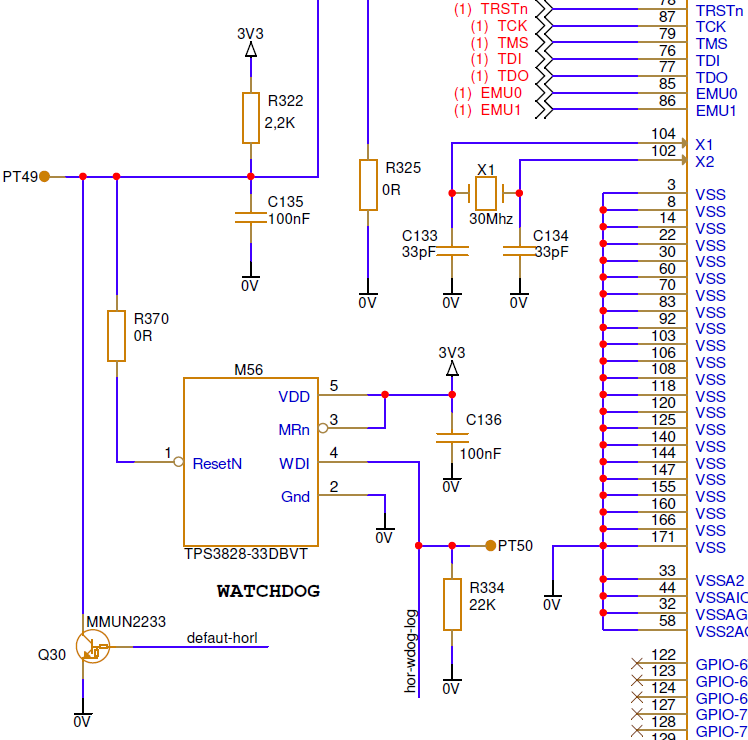Hi,
I'm using a control/command card with a TMS320F28335 which someone designed before I was in the company.
In the software, a pulse is generated via a GPIO in order to to prove that the software is running correctly. This signal is connected to the WDI pin of the TPS3828-33DBVT device (you can see it on the joined picture).
The problem is when I want to program/debug the software through the JTAG connector : i'm not able to do it because the TPS3828-33DBVT reset the µC every 1-2s because there is non signal coming from the µC.
I don't know if the implemented solution is the good one and if we use correctly the TPS3828-33DBVT...
I'm looking for a solution that allow me to program the µC when the JTAG is connected. Any idea ?
Thanks for your help



